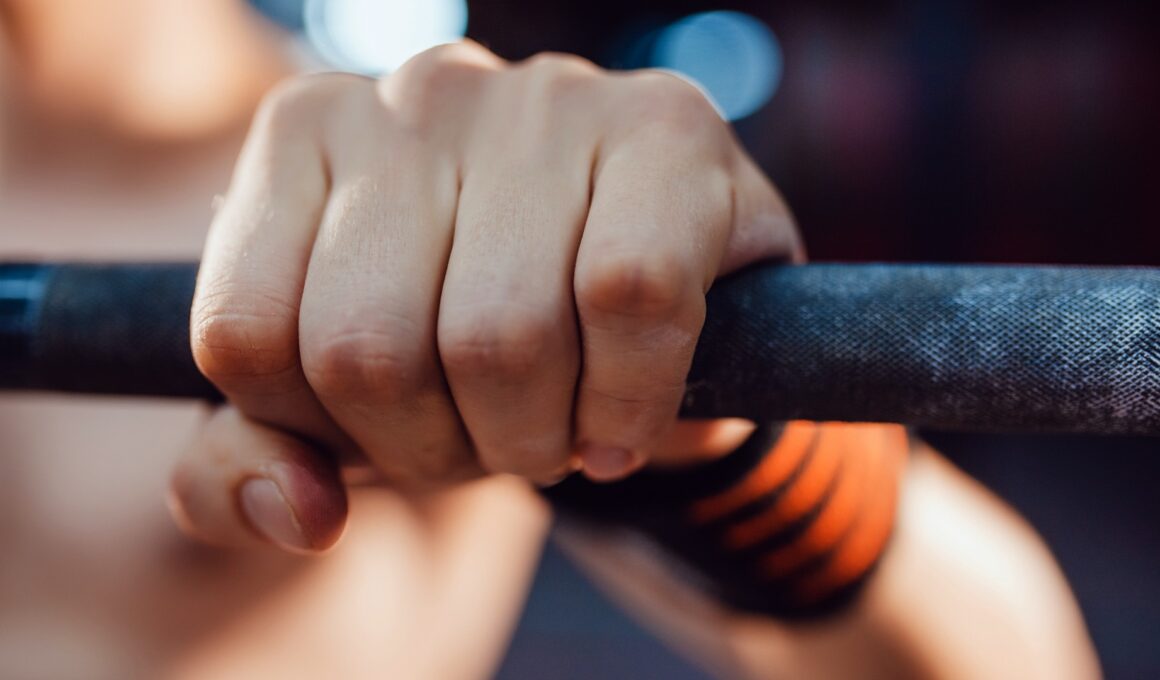If you’ve spent any time in the gym, then you may have noticed some people using a variety of wraps and straps while they work out. Before shifting large amounts of weight for a deadlift or other powerlifting-type move, many people will first take out these lengths of material and then wrap them around hands and wrists. Sometimes they’ll go even further and wrap them around their knees and other parts of their body like some kind of Mummy.
And maybe this has made you wonder… what’s going on?
As it happens, there are a couple of different types of material powerlifters and bodybuilders might be using in the gym and each of them have a place in aiding a good workout. Do you need them? Well, that all depends on your goals and the style of training you use.
Wrist Wraps
The clean and press is a movement that has you yank a barbell of the ground, jerk it upwards to rest against your chest near your shoulders and then press it overhead. If you stop and think about this for a moment then you’ll probably realize… that’s insane.
There are all kinds of ways that a movement like this can cause you injury but one of the most likely is that it can place excess strain on your wrists. When you’re poised ready to thrust the barbell upwards, the weight will be bearing down on your hands and causing them to bend backwards. If you have any kind of joint complaint then this can be very painful and in the worst case scenario it can even cause something to give way and snap.
The idea behind wrist wraps then is to provide extra support for the wrists, thereby preventing injury. At the same time, this enables you to safely lift more weight, which of course translates to faster ‘gains’. You can also get similar wraps for your knees and elbows which can help you with other movements like bicep curls, like squats, like deadlifts etc. Again, they enable you to lift more weight with less risk of serious injury which for the most part is a good thing.
The Problem With Wraps
The problem with these wraps though is that they can also lead indirectly to injury and even promote bad form. Because wraps support you through your movements, they shift some of the responsibility for good technique and thereby allow you to cheat your way through some of the movements without paying for it. At the same time, it can cause your muscles to strengthen faster than the connective tissue that works your joints and it can teach you that you’re able to lift more than you actually can in reality. All this can contribute to an increased likelihood that you might damage a joint or cause another type of injury when you come to move something heavy in the real world, or when you train without your wraps one day.
Wraps have their place then but should be used sparingly. If you are rehabilitating from an injury, or if you are attempting your PB (personal best) for the first time, then by all means use them. Just don’t rely on them.
Weight Belt
A weight belt is a slightly different concept when it comes to lifting weight. On the face of it, a lifting belt might seem like nothing other than a ‘wrap for your back’. And fundamentally, this is what a lifting belt does: it helps to protect your back when you’re lifting heavy weights using complex technique.
Where a weights belt is different though, is in the way that it operates. The main role of a lifting belt is to keep your back straight during squats and deadlifts so that you don’t develop a curve that could cause damage to your lower back. It doesn’t actually remove any of the work from your core but instead acts more like a ‘reminder’ that guides you into the correct position. In fact, a belt can help you brace the muscles of your abs and core thereby strengthening that area even more.
That said, many people manage just fine without a lifting belt and it’s certainly not required. Again, this is better utilized as something to help you when you’re unsure of a movement or when you’re shooting to break a personal record.
Lifting Straps
Lifting straps have a slightly different purpose than wraps and belts. Here, the idea is to help you keep hold of your weight. Instead of preventing injury, this is designed to help you lift more when your grip is a limiting factor.
Pick up a barbell and attempt to perform upward rows. What you may find is that your grip starts to give way before you manage to complete the full set and before you’ve exhausted the target muscles – the lats.
In other words, you aren’t able to get a complete workout because your grip has failed you. As a result, you might consider using lifting straps in order to ensure you’re able to complete your full set without risk of dropping the weight you’re lifting on your toes.
Again though, there are downsides to using lifting straps. The main downside is that they allow you to become lazy as far as your grip goes. Many ‘old time strongmen’ claimed that hand strength and grip training was one of the most important factors in developing overall power. If your grip is the weak link in your performance, then what really is the point of all that lat strength? Use straps and this problem will only get worse and this is important to consider. If you can’t lift a weight without lifting straps, then you can’t lift that weight.
Some gyms allow the use of chalk. But if yours doesn’t? Just man up and get a grip.




